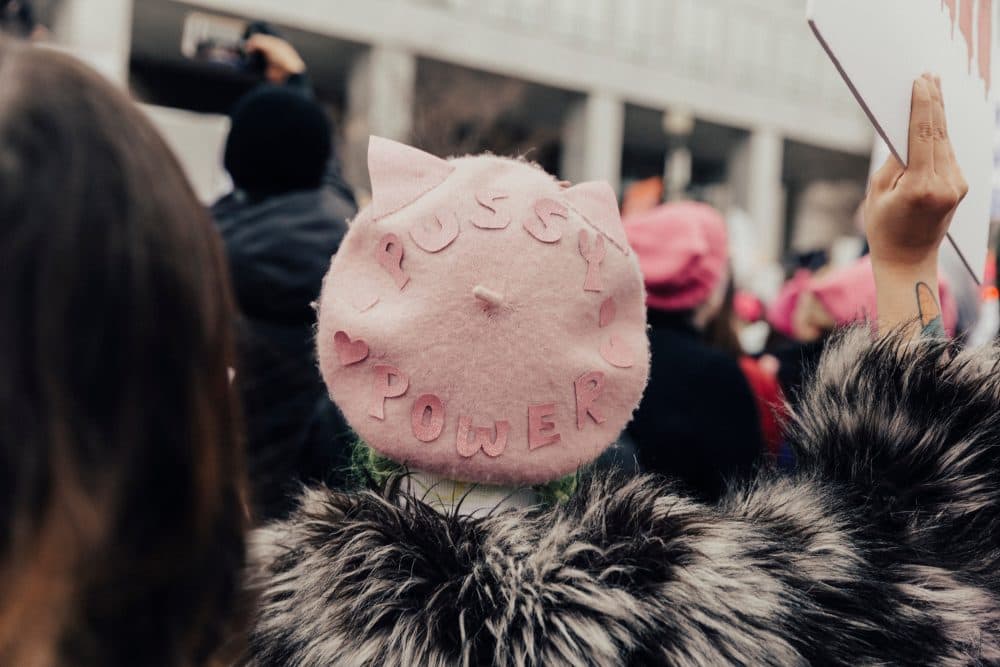Advertisement
Beyond The Women's March: Every Bit Of Resistance Matters

COMMENTARY
For progressives, every day since President Trump's inauguration has been worse than the last. If things continue at this pace, we’ll soon receive word of a Muslim registry and plans to open up Acadia National Park to condo development. But if the 2016 election taught us anything, it’s that nothing is inevitable: not Hillary Clinton, not a post-racial America and not Trump's mission to desecrate our democratic institutions.
Before the protesters had even finished marching last Saturday, members of the political class were posting comments like this one, from David Axelrod:
Of course, he’s right: The resistance won’t get very far if people view the Women's March on Washington as the end of their activism, instead of the beginning. The question “Now what?” is fair. But, really, I don’t think anybody -- even Axelrod and the fellas at Pod Save America, a new podcast in which former presidents' aides talk about challenges of the Trump presidency -- have any idea what will happen next. And we shouldn’t allow anyone's desire for structure to dampen the furious action in all directions we’re seeing right now.
Unplanned acts, by regular people, are often the first domino in movements for social change. Rosa Parks wasn’t the first person to resist bus segregation; she was “tired of giving in” on December 1, 1955. Her moment of defiance became a symbol for the movement. Mohamed Bouazizi, a Tunisian fruit seller, didn't know his suicide in 2010 would spark the Arab Spring. He was despondent over his treatment by government officials.
The resistance won’t get very far if people view the Women's March on Washington as the end of their activism, instead of the beginning.
More often than not, life unfolds at random, in messy chaos, not in a series of logical events. In America, where our culture prizes clarity over ambiguity, it’s hard to accept that nobody has the answer to the questions so many of us have been asking ourselves since Election Day: “What does it all mean?” and "What do we do now?"
Almost anything could have happened at the Women’s March on Washington. What did happen was either considered remarkable, if you, like me, agree with author Rebecca Traister’s analysis: “Women — and again, especially women of color, always progressivism’s most reliable and least recognized warriors, the women who did the most to stop the rise of Trump – were the ones taking progressive politics into the future.” Or it was, according to an especially dismissive David Brooks, an “important cultural moment” that would “never be an effective opposition to Donald Trump."
But here’s what I saw in Washington, D.C.: It was a peaceful, chaotic free-for-all of women, men and children of all shapes, colors and sizes. There were lots of pink pussy hats, yes. There were also cowboy hats, Patagonia fleeces and hijabs. Signs touted all manner of progressive slogans: Black Lives Matter. Immigrants Get the Job Done. Make Facts Great Again. My Body My Choice. All day long, my group of friends snaked in a conga line through the crowd. It didn’t matter that we couldn’t see or hear a thing happening on the stage; we were there to be counted.
By the time the march finally began, we rode the wave of people to wherever our bodies would fit. No one with a clipboard told us what to do, or where to go – we just kept moving, like water escaping though cracks in a dam.
Don’t be deterred by anyone who says it’s ineffective or it doesn’t matter. It all matters.
The march experience echoes my spaghetti-against-the-wall theory of politics. All of us better do what we can do and see what sticks. Make art, stage a reading, write a newsletter, sign a petition, register voters, donate money, start a Facebook group, host a “call Congress” party, make T-shirts, attend a protest, organize an event, knock on doors, knit a pink hat, read "A is for Activist" to your kid, sign up with swingleft.org, thesixtyfive.org, flippable.org, download the Indivisible guide for resisting Trump, commit to completing the March’s 10 Actions in 100 days. Do some of it, do all of it, do something. Don’t be deterred by anyone who says it’s ineffective or it doesn’t matter. It all matters. There's no sense in shutting down any ideas; not yet.
President Obama sought to remind us in the waning days of his term that democracy functions only if we are its stewards. He encouraged us to prioritize “citizen” in our already packed identities as parents, employees, business owners, pet lovers, friends, spouses, runners and football fans. This is the work millions of people began in earnest last weekend. As the 2018 mid-term elections approach, and as the Democratic Party rebuilds itself, I imagine the resistance to Trump will take on more of the focused shape that winning elections and policy victories requires.
But for now, let it be messy. Messy is good.
